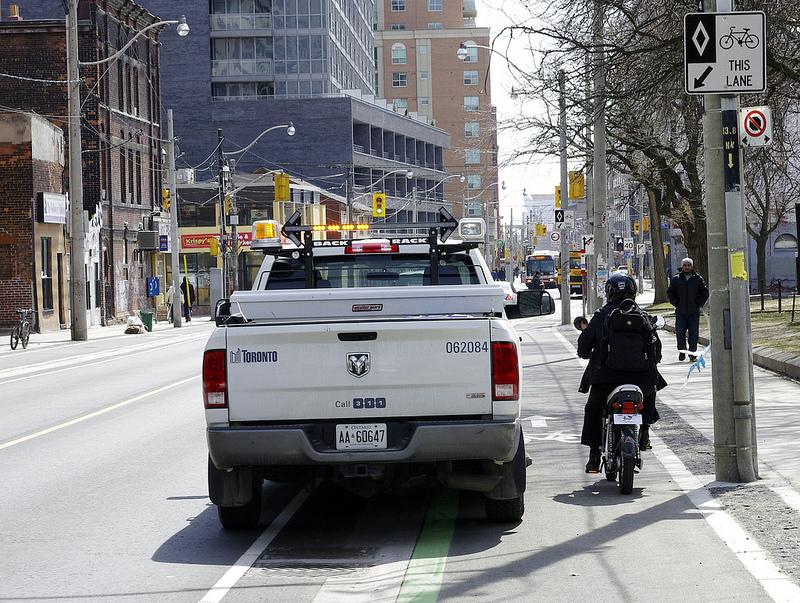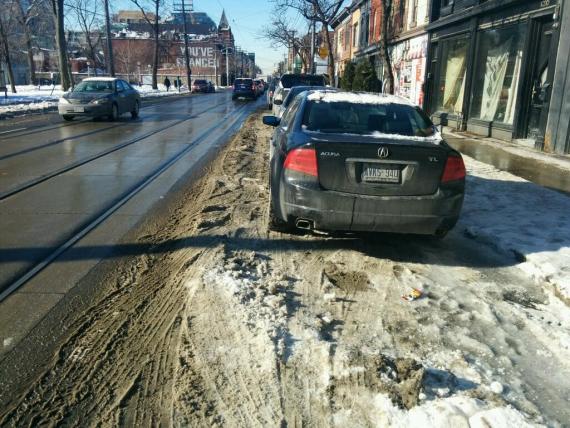In a controversial decision City Council has voted to allow e-bikes--both the regular-bike-looking and the e-scooter with vestigial pedals--in the bike lanes of Toronto. Council overturned the decision by PWIC which declined to allow the electric scooters in the bike lane. E-bikes are still banned from using trails and protected bike lanes. (Photo by Martin Reis)
Councillor Denzil Minnan-Wong's surprise motion barely passed with 21-18 votes. A few councillors were absent but it wasn't clear which way they would vote. Cycle Toronto, which had taken a strong stance on the e-bikes by stating that only "pedelec" should be allowed in the bike lanes, was caught off-guard by the motion.
A pedelec is similar to bikes in terms of speed and bulk, whereas an e-scooter is similar to a moped.
E-bikes is a controversial topic with people falling on either side of Cycle Toronto's stance, saying it was either too harsh or not strong enough. I trust my readers will not disappoint by being just as diverse. This is what Cycle Toronto said:
- We’re supportive of e-bikes as an alternative to larger, less environmentally friendly motor vehicles, especially for people with impaired mobility.
- We welcome Recommendation 1 to allow power-assisted bicycles which weigh less than 40kg and require pedaling for propulsion (“pedelecs”) in multi-use trails, cycle tracks and bicycle lanes.
- But we’re concerned about Recommendation 2, which would allow electric scooters in all painted bicycle lanes across the City.
- We support the MTO and Transport Canada addressing Recommendation 4, to split the existing power-assisted bicycles vehicle category into e-scooter and pedelec type vehicles, before the City considers the recommendation to allow them to drive in bicycle lanes.
Even though there is no crash data on e-bike/bike collisions, it's a valid concern. On the bright side, e-bikers, though still few in number, are potential allies in a fight for better cycling infrastructure. I'm not sure if that will make this decision palatable for most bicyclists.


